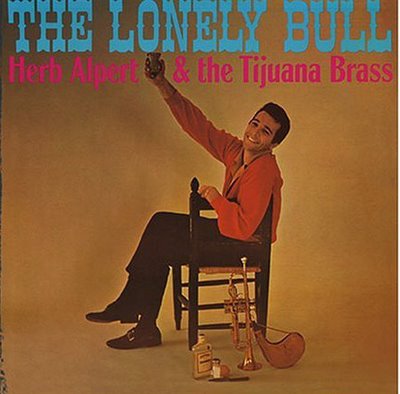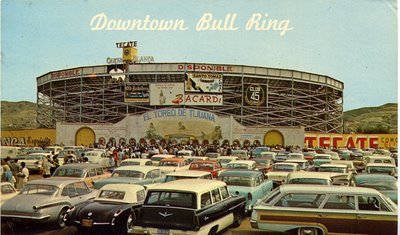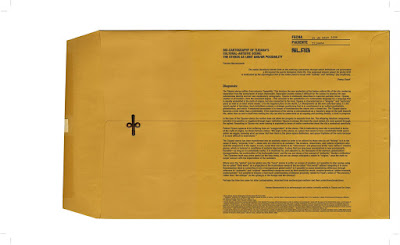Desarticulando la Memoria – El Toreo de Tijuana 1957 – 2007

1. There is no architecture without action, no architecture without events, no architecture without program
2. By extension, there is no architecture without violence.
Bernard Tschumi, Architecture and Disjunction, MIT,Press. 1984
¿Por que se condena al Toreo de Tijuana a la pena de muerte, acaso será por su vejez? ¿Acaso es un crimen vivir más de 70 años como artefacto histórico de la ciudad? Según las autoridades, la estructura ya cumplió su función y por eso tendrá que ser desmantelado, dejando a la ciudadanía aceptar que la única función de un edificio es su estabilidad estructural y no la relación histórica urbana que se creó con el tiempo entre ciudad e inmueble. Y si su función estructural es obsoleta (que en gran parte lo dudo por su construcción de acero) no habría quienes (Colegio de Arquitectos e Ingenieros) pudiesen hacer una revisión y adaptación de la estructura para su rehabilitación.
La Torre Eiffel, por hacer una comparación sencilla, se convirtió en un hito nacional y mundial por el paso del tiempo, recordando que en su época se calificaba de ridícula y fea por los grandes intelectuales Parisinos del siglo XIX.
“las obras acababan de comenzar cuando aparece en Le Temps una <>dirigida por a Alphand. La firmaban personajes importantes del mundo de las letras y de las artes: Charles Gounod, Guy de Maupassant, Alexandre Dumas hijo, Francois Coppee, y muchos más”
Bertrand Lemoine, Eiffel ,Stylos, España 1986
Sin embargo la Torre es hoy un espacio histórico mental de la sociedad moderna. Esa estructura de hierro fue una capricho arquitectónico donde el espectáculo era la explotación de la verticalidad de la ciudad porque en ella se exhibió el gran invento que vino a crear las ciudades del siglo XX; el elevador. La comparación no es tan obvia pero el Toreo de Tijuana como la Torre Eiffel son testigos de una época y acontecimiento importante de la ciudad, son estructuras singulares que no se pueden remplazar. En el caso del Toreo es el recinto o el nido (por su apariencia estructural) de la fiesta taurina en nuestra ciudad. Si podemos hablar de dos espacios que han tenido una relación importante con el desarrollo, cultural, turístico y económico de la cuidad son el Toreo de Tijuana y el Hipódromo de Agua Caliente. Aunque en lo personal no me interesa la fiesta taurina tengo que reconocer que el Toreo se encuentra grabado en la conciencia urbana de Tijuana. El evento de fingir valentía ante un animal que fue torturado previamente a la “fiesta” es parte del espectáculo perverso de la tauromaquia, sin embargo no hay arquitectura donde se puede desasociar la relevancia social del evento que ocurre en su interior. El Toreo de Tijuana es nuestra versión pervertida de la Torre Eiffel. La arquitectura es el discurso del evento, el Toreo es parte de la narrativa Tijuanense, es un espacio vivo de la muerte, una construcción del rito de la violencia – o acaso estamos tan avergonzados de los acontecimientos sangrientos en nuestra ciudad que nos desagrada el inmueble por su posible representación tectónico-espacial de nuestra vivencia contemporánea. Su estructura metálica pintada de rojo sangre nos aterra y al mismo tiempo nos causa una admiración sublime. Caminar por sus gradas de madera y presenciar el vacio por las ranura era incomodo y espantoso, ciertas deformaciones espaciales pueden ocasionar cambios radicales en la arquitectura de la contemplación hacia un instrumento arquitectónico perverso. Estamos destruyendo nuestra imagen con la intención de borrar sus defectos y esquivar el juicio de las próximas generaciones. Eliminamos espacios urbanos necesarios para adorar u odiar a la ciudad como lo hicieron Benjamín con las arcadas, Baudelaire con las calles de París y Poe con Londres. Recordemos que a veces denominamos como horrible o indecente en la ciudad lo que ha sido potencial creativo para muchos creadores como Charles Mingus y su jazz Tijuanesco de Tijuana Moods o la inspiración directa que tuvo Herb Alpert al asistir a una corrida de toros en el Toreo de Tijuana en 1963;
Alpert set up a small recording studio in his garage and was overdubbing a tune called “Twinkle Star” when, during a visit to Tijuana, Mexico, he happened to hear a mariachi band while attending a bullfight. Following the experience, Alpert recalled that he was “inspired to find a way to musically express what [he] felt while watching the wild responses of the crowd, and hearing the brass musicians introducing each new event with rousing fanfare.” Alpert adapted the trumpet style to the tune, mixed in crowd cheers and other noises to create ambiance, and renamed the song, “The Lonely Bull.” He paid out of his own pocket to press the record as a single, and it spread through radio DJs until it caught on and became a Top Ten hit in 1963. He followed up quickly with an album of “The Lonely Bull” and other titles.
http://en.wikipedia.org/wiki/Herb_Alpert

El toreo fue parte del trío turístico (hipódromo, toreo, jailai) que en la segunda década del siglo XX representaba la oferta cultural de la ciudad. Tijuana representada por el juego y el espectáculo de hombre contra bestia, bestia contra bestia y hombre contra hombre. Su fachada es singular en el sentido de que no existe, la estructura se penetra para poder entrar – el toreo es un interior al aire libre. Su forma circular es la más próxima semejanza a la real urbis romana, política-espacial. Aparte de la nostalgia que me produce la destrucción del toreo, me cuestiono su razón y, quizás ya muy tarde, quiero entender cuál es la relación semiótica con la sociedad y que labor jugó en la socialización de la misma. Al final no me queda mas que reflexionar sobre estas dudas y mantenerme atento de que no le pase lo mismo al Jai Alai.









